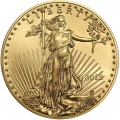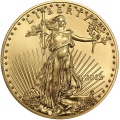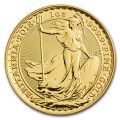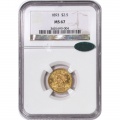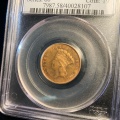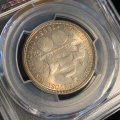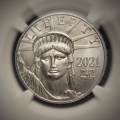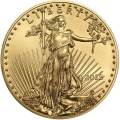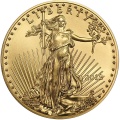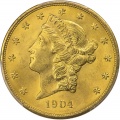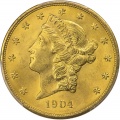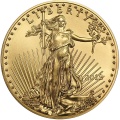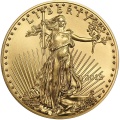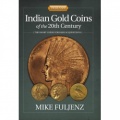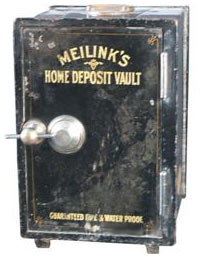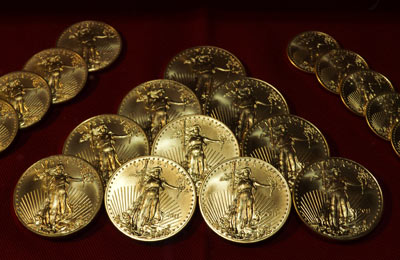TERMS AND CONDITIONS
AS USED IN THESE TERMS AND CONDITIONS, THE TERM "YOU" SHALL MEAN ANY VISITOR TO THE SITE AND/OR CUSTOMER OF FIRST FIDELITY RESERVE.
PLEASE READ THESE TERMS AND CONDITIONS CAREFULLY. BY ACCESSING THIS SITE YOU AGREE TO BE BOUND BY THE TERMS AND CONDITIONS BELOW. THESE TERMS AND CONDITIONS ARE SUBJECT TO CHANGE WITHOUT NOTICE. WE WILL NOTIFY YOU OF AMENDMENTS TO THESE TERMS AND CONDITIONS BY POSTING THEM TO THIS SITE. IF YOU DO NOT AGREE WITH THESE TERMS AND CONDITIONS, PLEASE DO NOT ACCESS THIS SITE.
First Fidelity Reserve ("FFR") operates this Website (the "Site") to provide online access to information about FFR and its products. By accessing and using this Site, you agree to each of the terms and conditions set forth herein ("Terms and Conditions"). Additional terms and conditions applicable to specific areas of this Site or to particular content or transactions are also posted in particular areas of the Site and, together with these Terms and Conditions, govern your use of those areas, content or transactions. These Terms and Conditions, together with applicable additional terms and conditions, are referred to as this "Agreement".
FFR reserves the right to modify this Agreement at any time without giving you prior notice. Your use of the Site following any such modification constitutes your agreement to follow and be bound by the Agreement as modified. The last date these Terms and Conditions were revised is set forth at the bottom of this page.
Use of Site
You may use this Site, and the information, writings and images on the Site solely for your non-commercial, personal purposes and/or to learn about FFR products. No right, title or interest in any content is transferred to you, whether as a result of downloading such content or otherwise. FFR reserves complete title and full intellectual property rights in all content. Except as expressly authorized by this Agreement, you may not use, alter, copy, distribute, transmit, or derive another work from any content obtained from the Site except as expressly permitted by these Terms and Conditions.
Copyright
The Site and the content are protected by U.S. copyright laws, and belong to FFR, its licensors, contributors or third parties. The copyrights in the content are owned by FFR or other copyright owners who have authorized their use on the Site.
Trademarks
You are prohibited from using any of the marks or logos appearing throughout the Site without permission from the trademark owner, except as permitted by applicable law.
Links to Third-Party Sites
Links on the Site to third party websites or information are provided solely as a convenience to you. If you use these links, you will leave the Site. Such links do not constitute or imply an endorsement, sponsorship, or recommendation by FFR of the third party, the third-party Site, or the information contained therein. FFR is not responsible for the availability of any such Site. FFR is not responsible or liable for any such Site or the content thereon.
Linking to this Site
Prior to linking to this site, you must first obtain FFR’s written permission. Requests to link to the Site should be sent to info@FirstfidelityReserve.com. Unless specifically authorized by FFR, you may not connect "deep links" to the Site, i.e., create links to this Site that bypass the home page or other parts of the Site. You may not mirror or frame the home page or any other pages of this Site on any other Site or web page.
Downloading Files
FFR cannot and does not guarantee or warrant that files available for downloading through the Site will be free of infection by software viruses or other harmful computer code, files or programs.
Disclaimer of Warranties
FFR MAKES NO EXPRESS OR IMPLIED WARRANTIES, REPRESENTATIONS OR ENDORSEMENTS WHATSOEVER WITH RESPECT TO THE SITE OR THE CONTENT. FFR EXPRESSLY DISCLAIMS ALL WARRANTIES OF ANY KIND, EXPRESS, IMPLIED, STATUTORY OR OTHERWISE, INCLUDING, BUT NOT LIMITED TO, IMPLIED WARRANTIES OF MERCHANTABILITY, FITNESS FOR A PARTICULAR PURPOSE, TITLE AND NON-INFRINGEMENT, WITH REGARD TO THE SITE, THE CONTENT, AND ANY PRODUCT FURNISHED OR TO BE FURNISHED VIA THE SITE OR BY FFR TO YOU AFTER YOU HAVE VIEWED THE SITE. FFR DOES NOT WARRANT THAT THE FUNCTIONS PERFORMED BY THE SITE WILL BE UNINTERRUPTED, TIMELY, SECURE OR ERROR-FREE, OR THAT DEFECTS IN THE SITE WILL BE CORRECTED. FFR DOES NOT WARRANT THE ACCURACY OR COMPLETENESS OF THE CONTENT, OR THAT ANY ERRORS IN THE CONTENT WILL BE CORRECTED. THE SITE AND THE CONTENT ARE PROVIDED ON AN "AS IS" AND "AS AVAILABLE" BASIS.
Limitation of Liability
IN NO EVENT WILL FFR BE LIABLE FOR ANY DAMAGES WHATSOEVER, INCLUDING, BUT NOT LIMITED TO ANY DIRECT, INCIDENTAL, CONSEQUENTIAL, SPECIAL, EXEMPLARY OR OTHER INDIRECT DAMAGES ARISING OUT OF (I) THE USE OF OR INABILITY TO USE THE SITE OR THE CONTENT, (II) ANY TRANSACTION CONDUCTED THROUGH OR FACILITATED BY THE SITE; (III) ANY CLAIM ATTRIBUTABLE TO ERRORS, OMISSIONS, OR OTHER INACCURACIES IN THE SITE AND/OR THE CONTENT, (IV) UNAUTHORIZED ACCESS TO OR ALTERATION OF YOUR TRANSMISSIONS OR DATA, OR (V) ANY OTHER MATTER RELATING TO THE SITE OR THE CONTENT, EVEN IF FFR HAS BEEN ADVISED OF THE POSSIBILITY OF SUCH DAMAGES. IF YOU ARE DISSATISFIED WITH THE SITE, THE CONTENT, OR WITH THE TERMS OF USE, YOUR SOLE AND EXCLUSIVE REMEDY IS TO DISCONTINUE USING THE SITE.
Indemnification
You understand and agree that you are personally responsible for your behavior on this Site. You agree to indemnify, defend and hold harmless FFR, its parent companies, subsidiaries, affiliated companies, joint venturers, business partners, licensors, employees, agents, and any third-party information providers to the service from and against all claims, losses, expenses, damages and costs (including, but not limited to, direct, incidental, consequential, exemplary and indirect damages), and reasonable attorneys' fees, resulting from or arising out of your use, misuse, or inability to use the Site, the service, or the content, or any violation by you of this Agreement.
Privacy
By accessing this Site you accept and acknowledge FFR’s Privacy Policy.
User Conduct
You agree to use the Site only for lawful purposes. You agree not to take any action that might compromise the security of the Site, render the Site inaccessible to others or otherwise cause damage to the Site or the content. You agree not to add to, subtract from, or otherwise modify the content, or to attempt to access any content that is not intended for you. You agree not to use the Site in any manner that might interfere with the rights of third parties. You agree that you will not use any robot, spider, other automatic device, or manual process to monitor or copy our Web pages or the content contained herein without our prior expressed written permission. You agree that you will not use any device, software or routine to interfere or attempt to interfere with the proper working of the Site or any transaction being conducted on our Site. You agree to abide by all applicable local, state, national, and international laws and regulations in your use of the Site. Our Site is available only to individuals who are permitted to use it under applicable law. If you do not qualify, please do not use our Site. You agree to be solely responsible for your actions and the contents of your transmissions through the Site. You agree not to impersonate any person or entity or falsely state or otherwise misrepresent your identity or affiliation with a person or entity.
Coin Transaction and Site User Agreement
By accessing this Site you accept and acknowledge the Coin Transaction and Site User Agreement.
Typographical Errors or Inaccuracies
The Site may contain technical inaccuracies or typographical errors or omissions. We are not responsible for typographical, pricing, product information, advertising or other errors on the Site. Advertised prices and available quantities are subject to change without notice. We reserve the right to make changes, corrections and/or improvements to the products and programs described on the Site at any time without notice.
Lost Transaction Information and Communication Errors
We are not responsible for communication malfunctions, failures, or difficulties, or lost, stolen, or misdirected, transmissions, messages or entries, or the security of any such communications. Further, we are not responsible for incorrect or inaccurate entry information, whether caused by user(s) or by any of the equipment or programming associated with the Site, or by any technical or human error that may occur in the processing of any information related to the Site. We are not responsible for any damages that may arise as a result of any orders you request or make on this Site which are not processed or accepted for any reason.
No Financial Tax or Legal Advice Provided
The Site and content are not intended to and do not constitute financial, legal or tax advice. Please seek the advice of professionals as necessary regarding the evaluation of any content on this Site. You should consult with your appropriate legal, financial or tax advisor regarding issues arising from the acquisition or disposition of precious metals, rare coins, rare currency and any financial investment. The information on this Site is not intended as an offer or solicitation for the purchase of any stock, any other security or any financial instrument or to provide any investment service or investment advice in any jurisdiction. You acknowledge that FFR advises and you have the opportunity to perform your own due diligence in deciding the amount and type of your coin transaction and numismatic position. You acknowledge that FFR advises and you have the opportunity to independently verify all representations made via the FFR website, via email, via FFR publications or from FFR representatives.
Timeliness of Information
All materials that are contained on the Site were, to the best of our knowledge, timely and accurate when first presented. However, the passage of time can render information stale, and you should not rely on the continued accuracy of any such material beyond the date of issuance. We have no responsibility to update any information contained in any such material. All viewers should carefully check the dates of issuance of the material contained in the Site.
ARBITRATION
YOU AND FFR AGREE TO ARBITRATE IN A FINAL BINDNG MANNER PURSUANT TO THE FEDERAL ARBITRATION ACT AND ADMINISTERED BY THE AMERICAN ARBITRATION ASSOCIATION IN ACCORDANCE WITH ITS COMMERCIAL ARBITRATION RULES IN JEFFERSON COUNTY, TEXAS ALL CONTROVERSIES BETWEEN YOU AND FFR, IT’S OWNERS, REPRESENTATIVES OR AGENTS THAT CANNOT BE AMICABLY RESOLVED BY DIRECT NEGOTIATION OR THROUGH PRE-ARBITRATION MEDIATION ARISING OUT OF OR RELATING IN ANY WAY TO THESE TERMS AND CONDITIONS OR ANY TRANSACTION WITH FFR, YOUR ACCOUNT, OR ANY SERVICE PROVIDED BY FFR TO YOU. IT IS UNDERSTOOD THAT YOU AND FFR WAIVE ANY RIGHT TO A JURY TRIAL. YOU AND FFR AGREE that all claims shall be brought in your or FFR’s individual capacity and not as a class member in any purported class or representative proceeding.
Limitation of Actions
You acknowledge and agree that, regardless of any statute or law to the contrary, any claim or cause of action you may have arising out of, relating to, or connected with your use of the Site, coin purchase, coin sales or any other transactions between you and FFR must be filed within one calendar year after such claim or cause of action arises, or forever be barred.
Termination
We will have the right to terminate your access to the Site if we reasonably believe you have breached any of these Terms and Conditions. Following termination, you will not be permitted to use the Site and we may, in our discretion, cancel any outstanding product orders. If your access to the Site is terminated, we reserve the right to exercise whatever means we deem necessary to prevent unauthorized access to the Site, including, but not limited to, technological barriers, IP mapping, and direct contact with your Internet Service Provider. These Terms and Conditions will survive indefinitely unless and until we choose to terminate it, regardless of whether any account you open is terminated by you or us or if you have the right to access or use the Site.
General Provisions
Entire Agreement/No Waiver. These Terms and Conditions constitute the entire agreement of the parties with respect to the subject matter hereof. No waiver by FFR of any breach or default hereunder shall be deemed to be a waiver of any preceding or subsequent breach or default.
Correction of Errors and Inaccuracies. The content may contain typographical errors or other errors or inaccuracies and may not be complete or current. FFR therefore reserves the right to correct any errors, inaccuracies or omissions and to change or update the content at any time without prior notice. FFR does not, however, guarantee that any errors, inaccuracies or omissions will be corrected.
Enforcement/ Choice of Law/ Choice of Forum. If any part of this Agreement is determined by a court of competent jurisdiction to be invalid or unenforceable, it will not impact any other provision of this Agreement, all of which will remain in full force and effect. Any and all disputes relating to these Terms and Conditions, FFR's Privacy Policy, FFR’s Coin Transaction and Site User Agreement, any coin purchase, coin sales or other transactions between you and FFR, your use of the Site, any other FFR Site, the Service, or the content are governed by, and will be interpreted in accordance with, the laws of the State of Texas, without regard to any conflict of laws provisions.
Claims of Copyright Infringement. Pursuant to Title 17, United States Code, Section 512(c)(2), notifications of claimed copyright infringement should be sent to Service Provider's Designated Agent.



